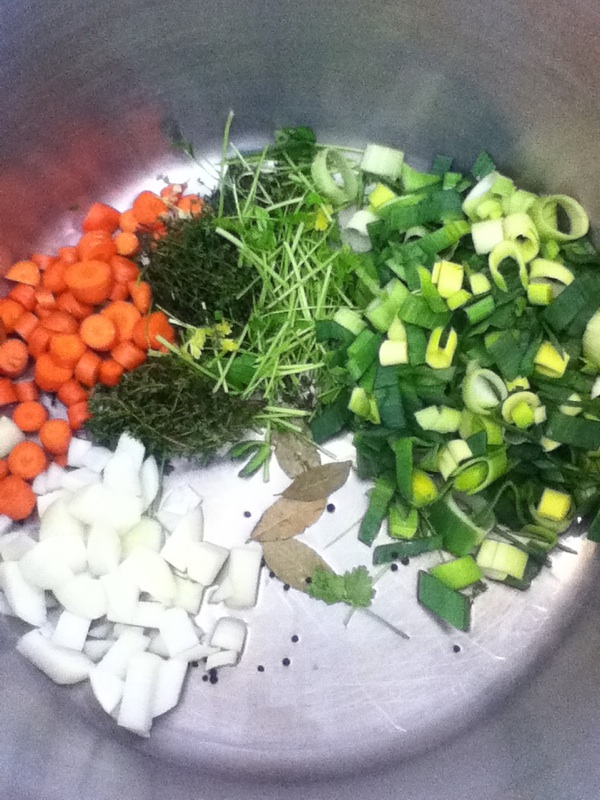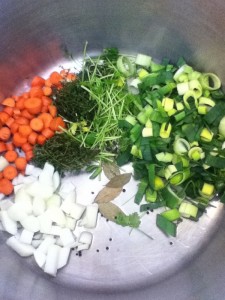We’re doing training on soups. First up, veg stock. All our soups use it. Coming up as a cook in kitchens across the country, I saw lots of different ways to make stock. Chicken stock was pretty standard. Bones (some roasted), mirepoix, herbs and water. One chef added garlic bulbs, but that was the largest deviation that I saw.
Veg stock was an entirely different story. The most common way was for cooks to throw all and any vegetable scraps/peelings into a pot. That pot would be on the stove all day. Those veg stocks never looked good to me. I thought it was sort of funny: we were taught how to be consistent and precise in all other aspects of cooking, but the veg stock wasn’t treated with the same respect. It was a cost savings measure, a way for the chef to squeeze as much flavor out of the vegetables that he/she paid for. Didn’t matter that the asparagus and potato peelings, cabbage roots, cauliflower and broccoli stems gave horrible colors, flavors and aromas to the broth.
Thomas Keller (chef at French Laundry) introduced me to a different concept. Vegetable soups there were typically about one single ingredient. He said, make a light and clean veg stock so that you taste the main ingredient in the soup. If you’re making soup with something light and delicate (potato, sunchoke, zucchini), you taste the potato or sunchoke, not the stock. And if you’re making soup with something with a stronger flavor, like parsnips, or peppers, then the light, clean stock won’t muddle those flavors.
Clover’s veg stock is heavily influenced by that idea (of course, we don’t grind our mirepoix in a meat grinder the way Thomas does). If you want to make ours at home, we roughly chop onions, celery, carrots, leek tops, bay leaves, thyme and parsley stems, and simmer them for awhile with a couple peppercorns in a large pot of water. Strain and use as needed.



